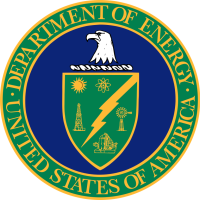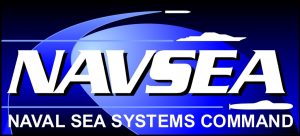Funding
ACTIVE FUNDING
U.S. Department of Energy
The United States Department of Energy (DOE) is an executive department of the U.S. federal government that oversees U.S. national energy policy and manages the research and development of nuclear power and nuclear weapons in the United States. The DOE oversees the U.S. nuclear weapons program, nuclear reactor production for the United States Navy, energy-related research, and domestic energy production and energy conservation.
Naval Sea Systems Command
The Naval Sea Systems Command (NAVSEA) is the largest of the United States Navy‘s five “systems commands,” or materiel (not to be confused with “material”) organizations. From a physical perspective, NAVSEA has four shipyards for shipbuilding, conversion, and repair, ten “warfare centers” (two undersea and eight surface), the NAVSEA headquarters, located at the Washington Navy Yard, in Washington D.C., and other locations in 15 states and 3 overseas continents.
DEVCOM
The Combat Capabilities Development Command, (DEVCOM, aka CCDC) (formerly the United States Army Research, Development, and Engineering Command (RDECOM)) is a subordinate command of the U.S. Army Futures Command. RDECOM was tasked with “creating, integrating, and delivering technology-enabled solutions” to the U.S. Army. Headquartered at Aberdeen Proving Ground in Maryland, RDECOM employed more than 13,000 scientists, engineers, researchers, and support personnel working at six major RDE centers and at the U.S. Army Research Laboratory (ARL), providing nearly all of the Army’s basic and applied research and development services, including in collaboration with other branches of the armed forces and through a network of more than a thousand academic, industrial, and international partners.
Sandia National Laboratories
Sandia National Laboratories (SNL), also known as Sandia is one of three research and development laboratories of the United States Department of Energy‘s National Nuclear Security Administration (NNSA). Headquartered in Kirtland Air Force Base in Albuquerque, New Mexico, it has a second principal facility next to Lawrence Livermore National Laboratory in California and a test facility in Waimea, Kauai, Hawaii. Sandia is owned by the U.S. federal government but privately managed and operated by National Technology and Engineering Solutions of Sandia, a wholly owned subsidiary of Honeywell International. Sandia have been supporting our work on LAMMPS since 2017 and we were recently renewed until 2025.
National Institutes of Health
The National Institutes of Health, commonly referred to as NIH (with each letter pronounced individually), is the primary agency of the United States government responsible for biomedical and public health research. It was founded in the late 1880s and is now part of the United States Department of Health and Human Services. The majority of NIH facilities are located in Bethesda, Maryland, and other nearby suburbs of the Washington metropolitan area, with other primary facilities in the Research Triangle Park in North Carolina and smaller satellite facilities located around the United States. The NIH conducts its own scientific research through the NIH Intramural Research Program (IRP) and provides major biomedical research funding to non-NIH research facilities through its Extramural Research Program.
National Science Foundation
The National Science Foundation (NSF) is an independent agency of the United States government that supports fundamental research and education in all the non-medical fields of science and engineering. Its medical counterpart is the National Institutes of Health. With an annual budget of about $8.3 billion (fiscal year 2020), the NSF funds approximately 25% of all federally supported basic research conducted by the United States’ colleges and universities. In some fields, such as mathematics, computer science, economics, and the social sciences, the NSF is the major source of federal backing.
CURE - Department of Health
The United States Department of Health and Human Services (HHS) is a cabinet-level executive branch department of the U.S. federal government created to protect the health of the U.S. people and providing essential human services. Its motto is “Improving the health, safety, and well-being of America”. Before the separate federal Department of Education was created in 1979, it was called the Department of Health, Education, and Welfare (HEW).
HHS is administered by the Secretary of Health and Human Services, who is appointed by the president with the advice and consent of the United States Senate. The position is currently held by Xavier Becerra.
The United States Public Health Service Commissioned Corps, the uniformed service of the PHS, is led by the Surgeon General who is responsible for addressing matters concerning public health as authorized by the secretary or by the assistant secretary for Health in addition to his or her primary mission of administering the Commissioned Corps.
National Academies
The National Academies of Sciences, Engineering, and Medicine (also known as NASEM or the National Academies) are the collective scientific national academy of the United States. The name is used interchangeably in two senses: as an umbrella term for its three quasi-independent honorific member organizations the National Academy of Sciences (NAS), the National Academy of Engineering (NAE), and the National Academy of Medicine (NAM); and as the brand for studies and reports issued by the operating arm of the three academies, the National Research Council (NRC). The NRC was first formed in 1916 as an activity of the NAS.
Now jointly governed by all three academies, the NRC produces some 200 publications annually which are published by the National Academies Press. The reports produced by the National Academies have been characterized as reflective of scientific consensus.








